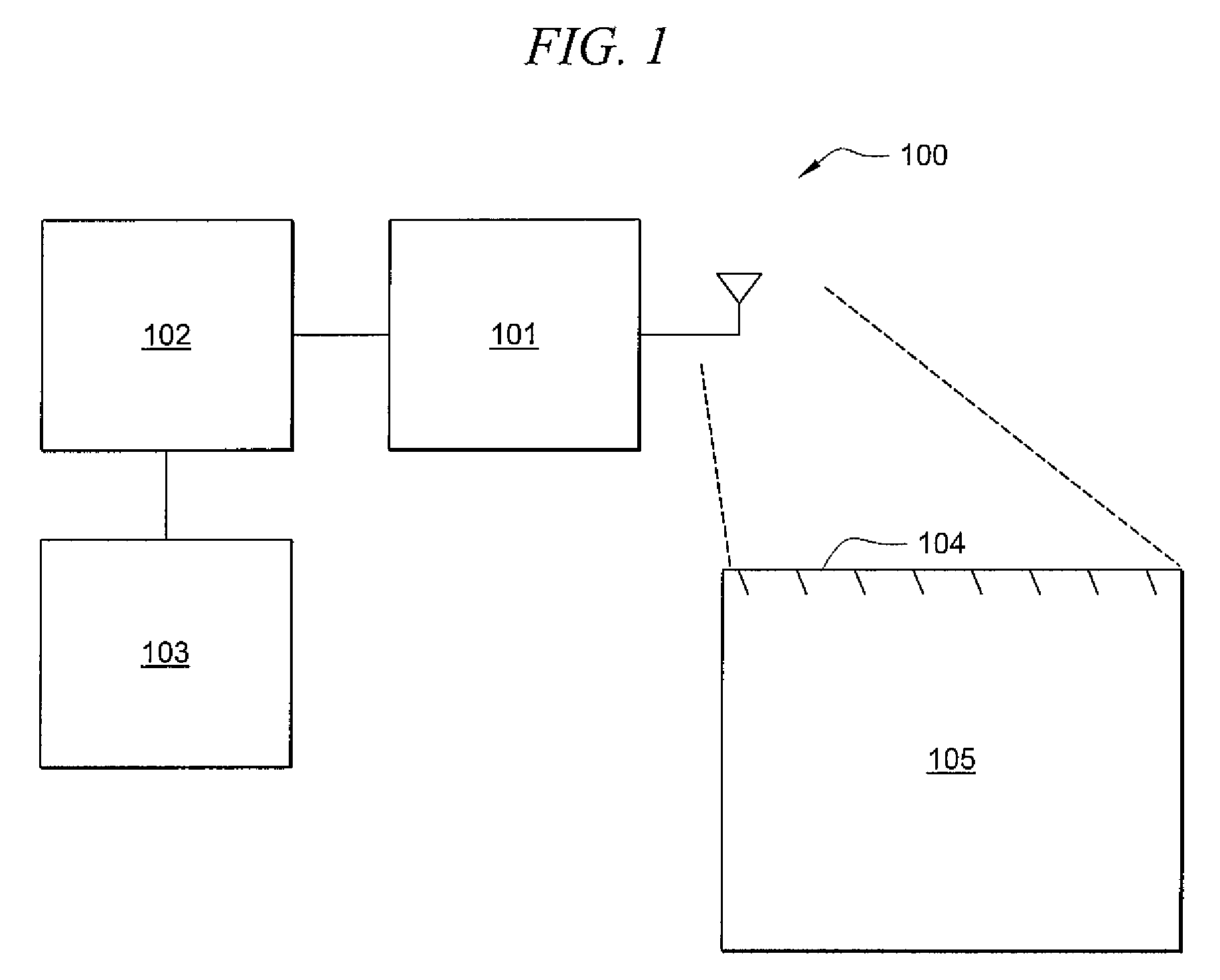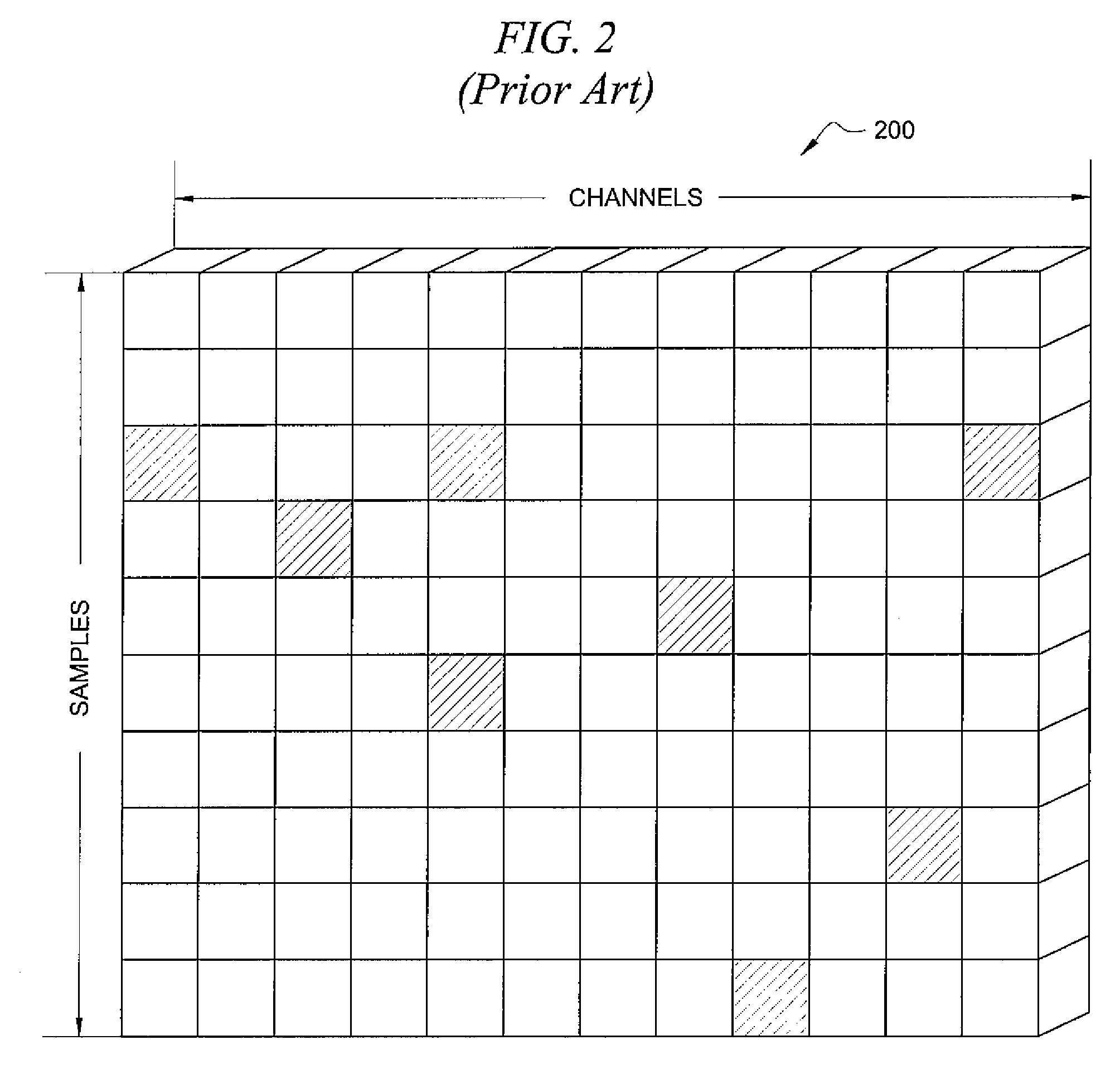System, method, and computer program product providing three-dimensional visualization of ground penetrating radar data
a technology of ground-penetration radar and computer program, applied in the field of radar information analysis and display techniques, can solve the problems of large training investment of prior art systems, difficult to produce 3d display in real-time, and inability to intuitively understand the system, so as to free up some amount of processing power of the computer system, the effect of limiting the amount of data being processed
- Summary
- Abstract
- Description
- Claims
- Application Information
AI Technical Summary
Benefits of technology
Problems solved by technology
Method used
Image
Examples
Embodiment Construction
[0019]FIG. 1 is an illustration of exemplary system 100 adapted according to one embodiment of the invention. System 100 includes transmitter / receiver (Tx / Rx) unit 101, processing unit 102, and display unit 103 and is operable to produce a real-time Three-Dimensional (3D) radar display.
[0020]Tx / Rx unit 101 includes a plurality of elements that radiate radar signals and receive returned signals. In some embodiments, transmitter and receiver elements may be separate or may be integrated, e.g., transceiver elements. In this example, system 100 is a Ground Penetrating Radar (GPR) system, and its radiation is focused on ground survey area 104. The radiation penetrates the ground and provides data with regard to survey volume 105.
[0021]In this example, the transmitter / receiver elements are arranged in one or more linear arrays parallel to the ground, with each of the elements corresponding to a portion of the width of survey area 104. Further, in GPR systems, the time between a transmit p...
PUM
 Login to View More
Login to View More Abstract
Description
Claims
Application Information
 Login to View More
Login to View More - R&D
- Intellectual Property
- Life Sciences
- Materials
- Tech Scout
- Unparalleled Data Quality
- Higher Quality Content
- 60% Fewer Hallucinations
Browse by: Latest US Patents, China's latest patents, Technical Efficacy Thesaurus, Application Domain, Technology Topic, Popular Technical Reports.
© 2025 PatSnap. All rights reserved.Legal|Privacy policy|Modern Slavery Act Transparency Statement|Sitemap|About US| Contact US: help@patsnap.com



